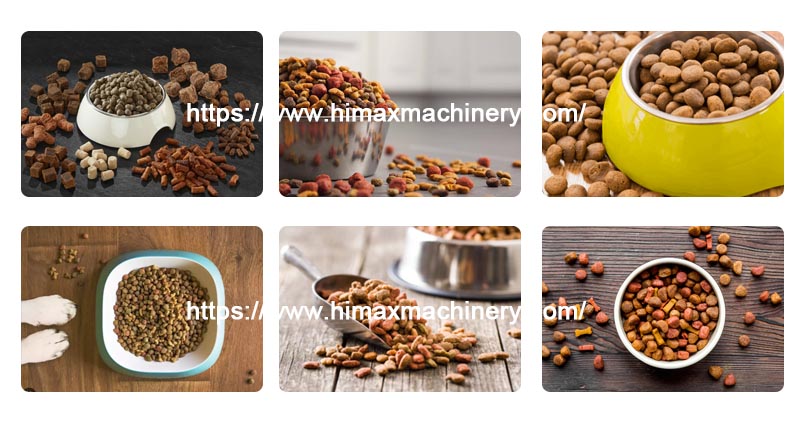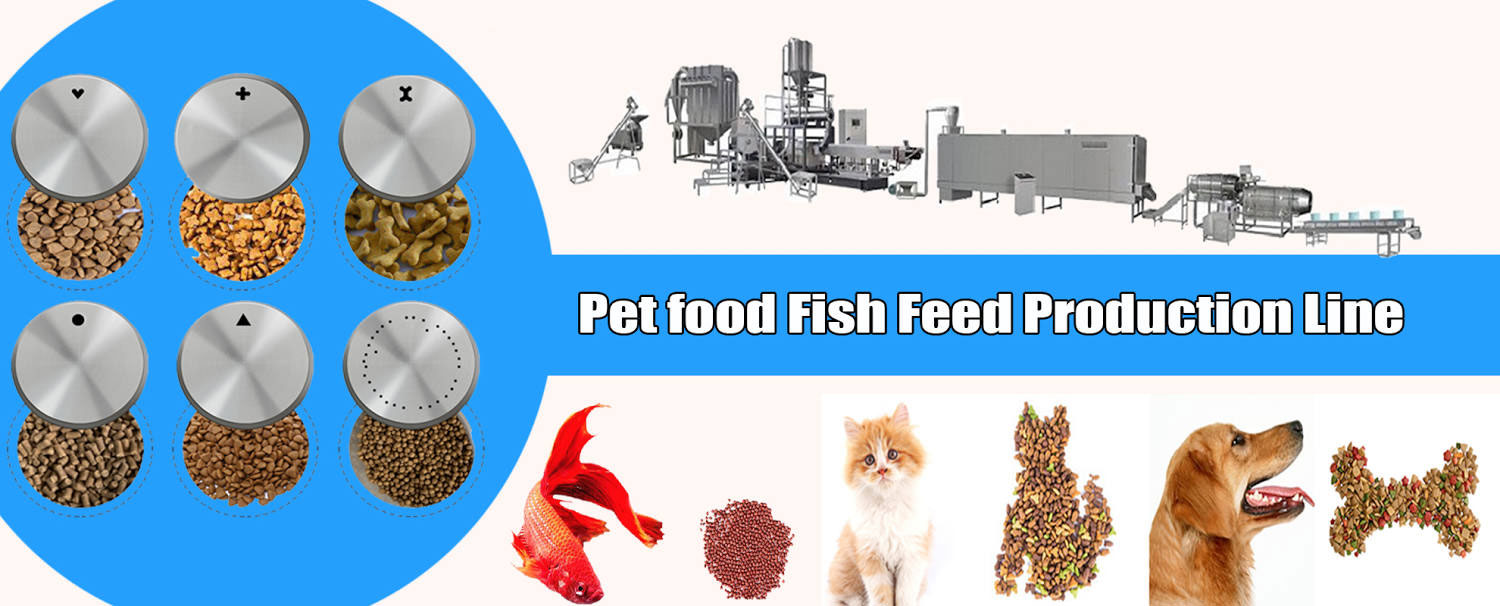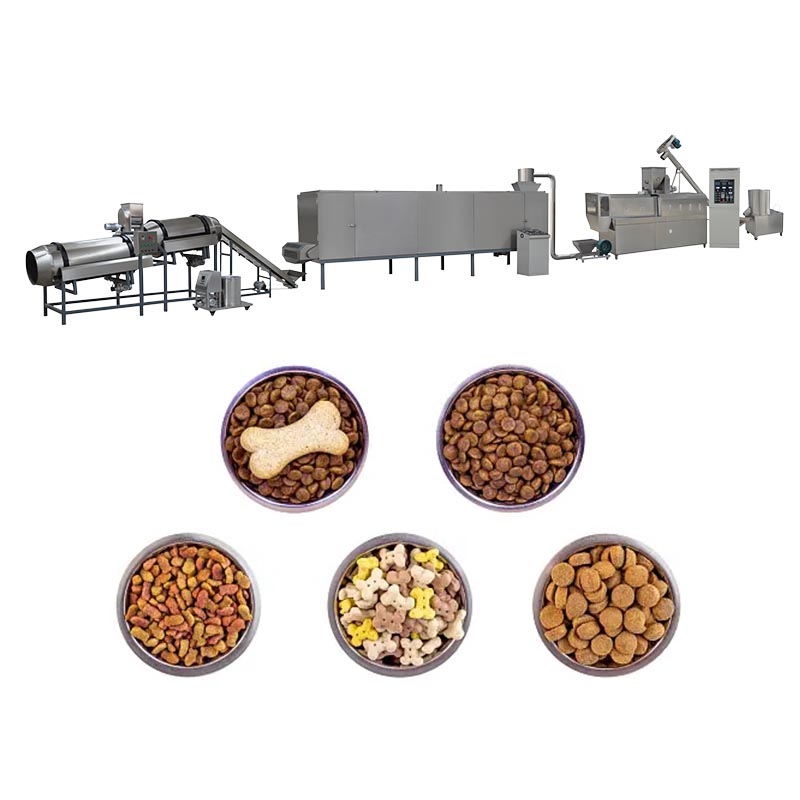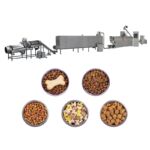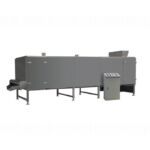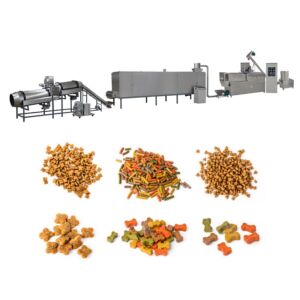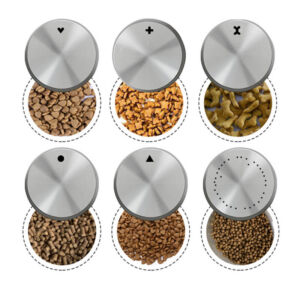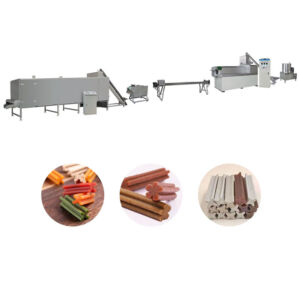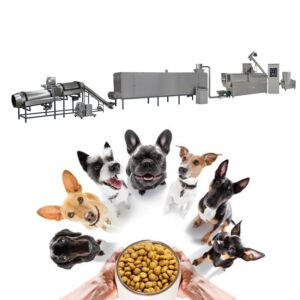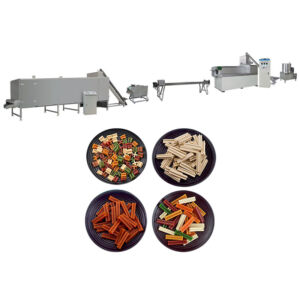Dry Pet Food Production Line
Factory price automatic dry dog food manufacturer for cats or other canines. Pet foods are similar to human foods in terms of sophistication, health indicators and nutritional content, and some even have higher requirements than humans. in the extruder, the raw material is cooked at high temperature and pressure as it moves towards the open end of the extruder, where it passes through a forming die and a blade. The fish feed is dried in a multi-pass dryer until its moisture content is low enough to make it stable for storage..

Raw material of dog food production line
Pet food processing line can use meat meal, fish flour, corn powder, soybean meal and other grain powder as raw material to produce dry pet food, as dog food, gatos, fish and birds. , etc. You can also use meat, bones, animal viscera, fish, vegetables, fruits, etc. to produce pet food.

Moho
Pet food pellet machine can adjust raw materials, the temperature, humidity and other process parameters, so that the product has the shape characteristics, flavor, rich nutrition and delicate tissue novel, which is suitable for the taste of different pets.
Different feeding shapes and sizes can replace molds and adjust the expansion degree
Forms of dog food and cat food: heart, bone, circle, triangle, small fish shape, square, etc. Forms of food for cats: heart, bone, circle, triangle, small fish shape, square, etc.

Types of pet food production line on the market
Small and medium-sized pet production line equipment can be widely used in dog food production, gatos, fish and shrimp, foxes, birds and various pets. Ideal for pet food manufacturers.
Pet food processing machine has low investment, high performance, small size and high degree of automation. The whole machine is made of stainless steel.
Production process
1) Reception and initial cleaning of raw materials: use main cylinder cleaning sieve and permanent magnetic cylinder to filter raw materials and remove impurities;
2) Grinding stage: use a mechanical feed mill to grind the material to a suitable particle size;
3)Mixing stage: Mixing equipment mixes the materials in a certain proportion.
4) Extrusion and inflation stage: use twin screw extruder equipment to extrude the material into the desired shape;
5) Cooling stage: Cool high temperature granule feed with cooling equipment, like a counterflow cooler;
6) Crushing stage: use a crusher to break the feed granules into a suitable size;
7)Screening stage: use rotating sorting sieve and other screening equipment to screen the finished feed that meets the standards;
8)Packaging stage: Quantitative packaging of pelleted feed with packaging scale.
Finished product
